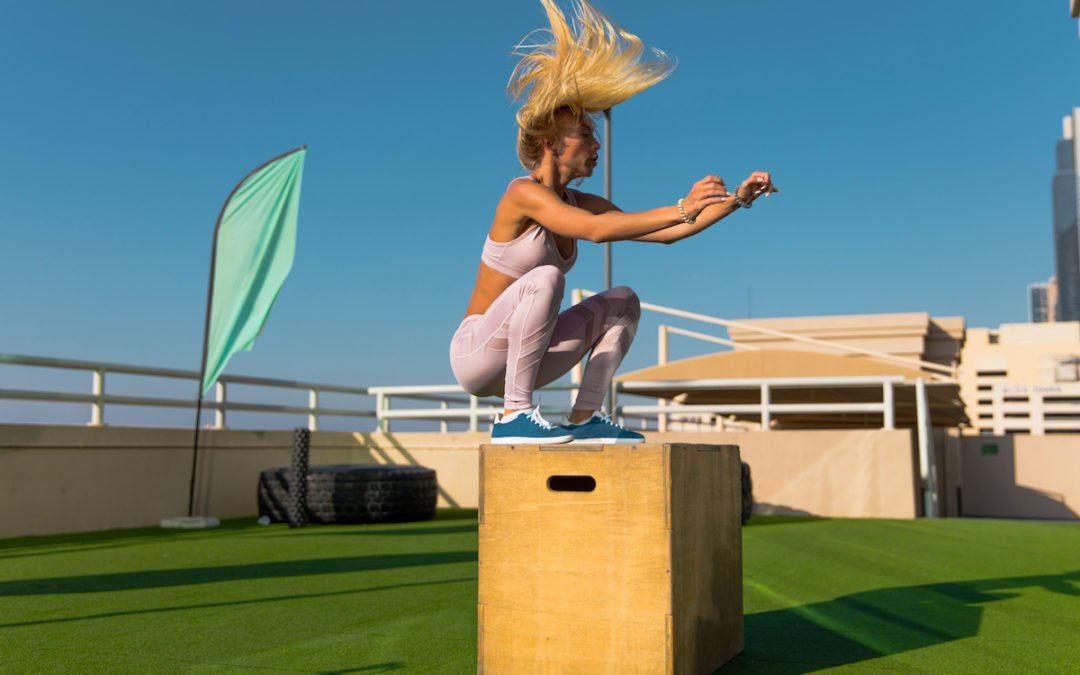If you are not seeing the results that you are looking for or maybe want to enhance your athleticism, you should make changes. A way of getting fitter and leaner is by incorporating plyometrics into your routine. Plyometrics or plyos are exercises that involve quick, powerful movements that use a stretch-shortening cycle to produce maximum force in a short amount of time.
Plyometric exercises are those in which your muscles exert a great amount of force in short intervals of time, involving an all-out effort. However, plyometric training requires proper form and is not recommended for beginners or those with existing injuries.
Benefits of Plyometrics
There are several benefits associated with incorporating plyometrics into a fitness routine:
- Improved Power: Plyometric exercises help improve muscle power by increasing the speed at which muscles contract. This is particularly beneficial for athletes in sports that require explosive movements, such as sprinting, basketball, and volleyball.
- Increased Strength: Plyometrics can enhance muscle strength, especially in the lower body, by engaging fast-twitch muscle fibers. Research shows that plyometric training significantly improves strength performance.
- Muscle Building: As you increase your strength through performing explosive movements such as plyometrics, you can lift heavier, which results in building muscle mass.
- Enhanced Athletic Performance: Plyometrics increase your ability to exert greater force faster, increasing your power and making you fitter. Athletes often use plyometric training to enhance their performance in sports that require quick bursts of speed and power, such as football, soccer, and track and field.
- Better Agility and Coordination: Plyometric exercises require coordination and balance, which can help improve agility and proprioception (the body’s ability to sense its position in space). This can be beneficial for athletes and non-athletes alike, as it can reduce the risk of injury during activities that require quick changes in direction.
- Increased Bone Density: The high-impact nature of plyometric exercises can help increase bone density, reducing the risk of osteoporosis and bone fractures, especially in older adults.
- Fat Burning: Plyometric workouts often involve high-intensity intervals, which can help burn calories and promote fat loss. Additionally, the increased muscle mass resulting from plyometric training can boost metabolism and calorie expenditure at rest.
- Minimal Equipment Required: Many plyometric exercises require little to no equipment, making them accessible and convenient for people to perform at home or in a variety of settings.
- Time Efficiency: Plyometric workouts can be short but intense, making them a time-efficient option for those with busy schedules who still want to achieve fitness goals.
- Variety and Fun: Plyometric exercises can add variety to a workout routine and make exercise more enjoyable for some people. The dynamic, explosive movements can provide a break from traditional strength training exercises and keep workouts interesting.
- Adaptability: Plyometric exercises can be modified to suit individuals of different fitness levels and abilities, making them suitable for beginners and advanced athletes alike. As strength and proficiency improve, the intensity and complexity of plyometric exercises can be adjusted to continue challenging the body and promoting progress.
- Balance and Stability: Any movement in which you are jumping or using one leg at a time works on your balance and helps you build long-term bodily stability.
- Versatility: You can perform plyometrics anywhere and at any time. They are great because there is no equipment needed, except for your own body. Plus, plyometrics can help you to become more versatile. ?

Plyometric Workout
In order to get most of your plyometric training, it’s best to perform them at the beginning of a workout (after warming up) before your muscles are too fatigued. You can start with 4-8 repetitions for three to four sets. Try not to do plyometric training every day, rest at least 48 hours between sessions, so you can perform at your best and see better results.
You can do a plyometric workout by doing a series of plyometric exercises. Here are a few plyometric exercises you can perform:
- Long Jumps
- Squat Jumps
- Reverse Lunges with Knee Hops
- Plyo Lunges (or jumping lunges)
- Horizontal Jumps
- Judo Rolls with Jumps
- Start Jumps
- Kneeling Jump Squats
- Plyo Spider Lunges
- Froggers
- Plyo Pushups
- Tuck Jumps
- Burpee with Tuck Jumps
- Single-Leg Deadlift Jumps
- Horizontal to Tuck Jumps
- Pistol Squats Roll with Jump
- Plyometric Push-Ups to Squat
Now you understand all the powerful benefits associated with plyometrics. Incorporate a few different plyometric exercises into your routine and experience great changes in your physique, a greater athletic edge, increased strength, denser bones, and the ability to work out any time, any place without the need for equipment.
Remember, whether you want to lose weight, tone your body, or gain strength or size, all muscles must be trained. Lift, Burn more Fat, Get Stronger, and Live Healthier!
To a Fitter Healthier You,
The Fitness Wellness Mentor



